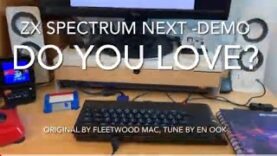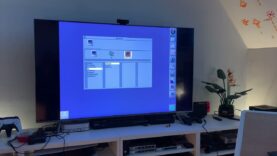SparcStation 5 core booting into NextStep 3.3 on MiSTer FPGA ( 


 )
)
Lactobacillus Prime
#MiSTerFPGA #Sun #SparcStation5 (


Another core that is not official yet but stable enough to give it a go.
– NextStep 3.3 
– Solaris 8
– Unix
These OSes are compatible with this core which is not straightforward to operate yet.
Information on this core and how to get it up and running can be found on the MisTer forums by typing: Mister Sparcstation core into the Google Search thing and the forum will pop up as one of the fount entries. When I tried it was at the top.
So back in ’94, Sun Microsystems dropped the SPARCstation 5 (or SS5 if you’re feeling fancy, codename: Aurora). It was this cool workstation rocking the sun4m architecture, all snug in a purple pizza-box chassis. You could also grab a SPARCserver 5 minus the framebuffer. Eh… grab… well they came in pretty expensive – back then it was the stuff of legend and when at University one could be lucky enought to be alotted some time on one of these.
They later dropped a simpler, more budget-friendly version called the SPARCstation 4 in ’95. Sun was also slick with the “Netra” branding for these machines, stripping them of framebuffers and keyboards, and loading them up with all the web server software you’d need. They must’ve been a hit ’cause they sold over 400,000 of those SPARCstation 5s.
Let’s break down the SPARCstation 5 hardware:
CPU Power
So, inside the SPARCstation 5, you’ve got some serious processing muscle. You can choose from Sun Microsystems microSPARC-II processors at 70, 85, or 110 MHz, or go all out with a 170 MHz Fujitsu TurboSPARC. Fujitsu even dropped a 160 MHz TurboSPARC CPU Upgrade Kit for those looking to spice up their 70, 85, or 110 MHz microSPARC-IIs. But here’s the catch – it’s a solo act, no multi-processor magic here.
Memory Boost
Memory-wise, the SPARCstation 5 rocks eight slots for DSIMMs. Pop in 8 MB or 32 MB modules, mix and match, and you can max out at 256 MB. The SPARCstation 4 is basically its twin in the memory department.
Storage Vibes
For storage, this machine can stash two internal 80-pin SCA, single-ended, fast-narrow SCSI drives, along with a SCSI CD-ROM drive and a floppy. You can also hook up external SCSI gear. But hold up – no love for IDE/ATAPI here.
Networking Moves
Networking is covered with an on-board AMD Lance ethernet chipset, dishing out 10BASE-T goodness, plus 10BASE2 and 10BASE5 via an AUI transceiver. Need more speed? Toss in a 10/100Mbit/s hme “Happy Meal” NIC for faster connections. Booting from the network? No problem, thanks to the OpenBoot ROM doing its thing with RARP and TFTP. Just watch out for that NVRAM – if it kicks the bucket, your system won’t fire up until it gets a reprogramming fix. On the MiSTerFGPA Core this little thing was a bit of a snag when developing I read.
Expansion Play
When it comes to expansion, the SPARCstation 5 boasts three SBus slots – pretty standard for Sun gear of its time. The third one, though, has a special AFX connector unique to this system. Only one card ever slid into that slot – the S24 or TCX. It’s a framebuffer that cranks up your graphics game to 24-bit color, leaving the regular SBus CG6 card (aka LEGO or Minecraft) and its 8-bit color in the dust.
Legendary machines back in the day. Especially the blue/purple that stood out so much from the beige machines in the lab. Indy machines also sported a nice contrasting colour. A bit of a thing for high-end machines back in the day.
Thanks for watching – LactobacillusPrime
My Facebook:
https://www.facebook.com/LactobacillusPrimeRetroGaming
My Instagram:
https://www.instagram.com/lactobacillus_prime
NOTICE:
“Copyright Disclaimer Under Section 107 of the Copyright Act 1976, allowance is made for “fair use” for purposes such as criticism, comment, news reporting, teaching, scholarship, and research. Fair use is a use permitted by copyright statute that might otherwise be infringing. Non-profit, educational or personal use tips the balance in favor of fair use.”













 – a bit of a moralistic Lego infused thingiemebob
– a bit of a moralistic Lego infused thingiemebob 








